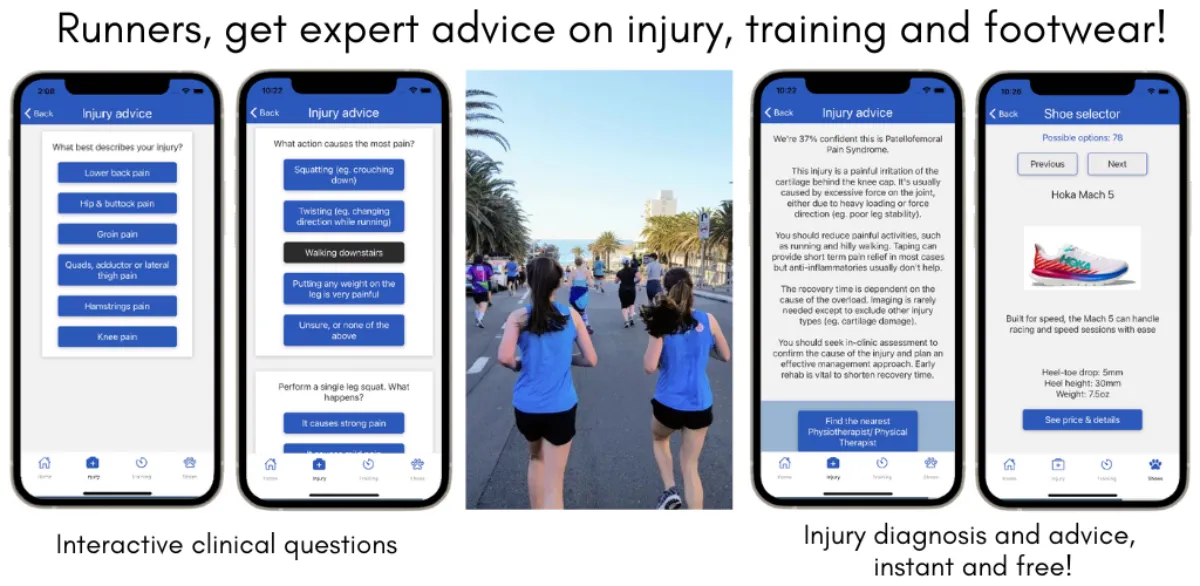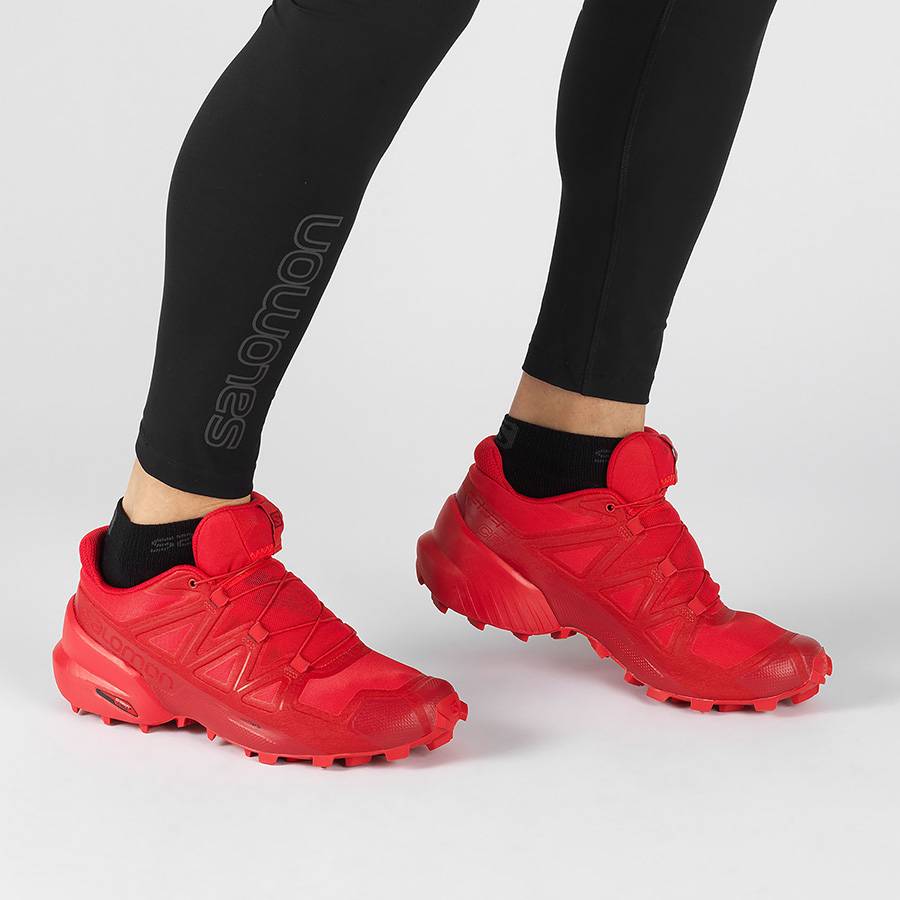In This Article
Finding the best running shoes can be a challenge – trying to find the best running shoes for calf pain adds another dimension!
Running shoes can have a big impact on the pressure in the calf muscle when you run.
So it makes sense that the best running shoes for calf pain should be able to help take the pressure off the injured area.
We often get asked for Physio recommended shoes, but it’s not as simple as having one go-to shoe for all calf pain.

To get the best running shoes for calf pain, you ideally need to know what’s causing your calf pain.
To help identify the underlying cause, have a read of this great article on causes of your calf soreness.
Let’s kick off with our Physiotherapist’s favourite shoes for calf pain, then we’ll explain what features to look for when searching for the best running shoes for calf pain (click here to skip to that section).
Need expert advice to get the perfect shoe?
We’ve combined the expertise of a Sports Physiotherapist with a running coach to bring you accurate advice, for FREE!
This app, on Android and ios, offers expert advice on the perfect running shoes for you and your niggles.
The app can also diagnose injury and suggest running sessions that won’t flare up any current niggles.

Our list of the best running shoes for calf pain
Here’s our favourite shoes for calf pain, with their respective features listed.
If you’re not sure what all these terms mean (like “stack height” and “heel-toe offset”), have a read of our post here explaining each part and function of the running shoe.
HOKA Bondi
- Low heel-toe offset of 4mm (but with rocker bottom)
- Neutral/no support
- Plush stack height of 40mm
- Smooth road grip
- Also available in a wide fit
Mizuno Wave Rider
- High heel-toe offset of 12mm
- Neutral/no support
- High stack height of 36mm
- Smooth lug-type road grip
- Also available in a wide fit
You’ll find the latest Wave Riders here.
Our recommendation: a nicely balanced running shoe for mid to high mileage runners who like a shoe with some structure.
Mizuno Wave Inspire
- High heel-toe offset of 12mm
- Moderate support
- Plush stack height of 38mm
- Smooth combination road grip
- Also available in a wide fit
Asics GT-2000
- Mid-high heel-toe offset of 10mm
- Moderate support
- Mid-high stack height of 33mm
- Smooth road grip
- Also available in a wide fit
Brooks Ghost
- High heel-toe offset of 12mm
- Neutral/no support
- High stack height of 36mm
- Smooth road grip
- Also available in narrow and wide fit
You’ll find the Ghost in different widths here.
Our recommendation: Ghost is a great running shoe for those who like firmer cushioning and protection underfoot.
Brooks Adrenaline GTS
- High heel-toe offset of 12mm
- Mild/moderate support
- High stack height of 36mm
- Smooth road grip
- Also available in narrow and wide fit
Features of the best running shoes for calf pain
When we choose the best running shoes for calf pain, there are 4 key features that control how much load the calf muscle is under.
Heel-toe offset, level of support, stack height and grip/outsole all directly contribute to calf load with a change in position or altered biomechanics.
Some personal preference all comes into it.
Some people like a plush bounce feel, others prefer a firmer feel with less cushioning.
But in general, the best running shoes for calf pain will match some or all of the features above.
In the right shoe, you should find less calf pain within a few runs.
(If you’re not sure what all these terms mean, like “stack height” and “heel-toe offset”, have a read of our post here explaining each part and function of the running shoe.)
Feature #1 – Heel-toe offset
The first is heel toe offset, also known as heel to toe drop.
This describes the height of the heel relative to the height of the toe.
It tells you how much the foot is angled downwards when you’re standing.
This downwards angle reduces the amount of stretch on the calf.
So a high heel toe offset, typically around 10mm or greater, will reduce the amount of stretch of the calf.
If your calf symptoms are linked to shorter calf muscles, a higher heel toe offset is helpful.
A high heel toe offset is also useful for very painful, irritated conditions as it provides some pain relief.
It allows you to run faster with less pressure on the calf compared to low drop shoes.
One notable exception to this is the HOKA range, famous for their big plush outsoles.
The HOKA range are actually a low drop shoe, most around 3-6mm, but they make up for it with a rocker bottom.
A rocker bottom is a rounded base that allows you to roll through the landing motion, rather than a flatter base.
So even though these shoes may place the calf on more stretch, they also minimise calf loading by avoiding a spike in calf pressure as you push off.
Feature #2 – Level of support
Our next feature for the best running shoes for calf pain is support level. But be warned, more is not automatically better.
The level of support is rated from neutral (no direct support), then minimum/moderate/maximum support levels and finally, motion control.
Neutral shoes make the calf work harder by increasing the amount of muscle work required to stabilise the ankle.
The min/mod/max support options provide more structure and support (obviously) which reduces the stability work required.
But it can inadvertently make it harder for the calf to propel you forwards.
(Motion control options are rarely required and make normal biomechanics almost impossible).
The best advice for support levels is to go with the lowest level required to maintain a consistent running technique for the duration of your runs.
If you start well but lose form in the last few miles, you might benefit from an upgraded support level.
Feature #3 – Stack height
When searching for the best running shoes for calf pain, this feature is critical for calves that are overloading on landing.
Stack height refers to the overall height off the ground – basically it’s the amount of foam under your foot.
Higher stack heights, as seen with HOKA running shoes and other brands, reduce the calf muscle work with landing.
As you impact, the cushioning help with shock absorption.
That means your calf muscles won’t be as active, which should reduce calf muscle fatigue.
Feature #4 – Outsole or grip
Last feature on our list in the search for the best running shoes for calf pain is …(drumroll)…. the outsole or grip on the shoe.
And this one should surprise you!
Better grip – either from new shoes or more aggressive grip patterns – actually increases the load on the calf.

As you push off, the improved grip ensures that you don’t slip.
So all that force generated in the calf is matched by a firm attachment to the ground, maximising calf muscle loading.
Compare that to an old shoe, smooth grip patterns or road shoes worn on trail, and the opposite occurs.
The calf force is allows to slip a little as it pushes off, reducing the forces pushing back against it.
That will reduce your performance slightly but it’ll also reduce your calf pain in each running session.
Disclaimer for The Best Running Shoes for Calf Pain.
**Special note: this article has Physiotherapist-recommended products with affiliate links to trusted vendors, selected for their fast & reliable service and great prices. The article was written prior to sourcing the affiliate links and the links in no way influence our recommendations.


